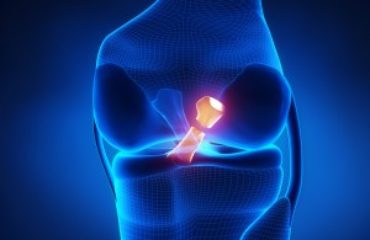The ankle joint is a common site for injuries that vary from an ankle sprain to ankle bone fractures. Here we will review some of the common types of ankle injuries and their specific surgeries. Achilles tendinosis is a condition in which the Achilles tendon degenerates and becomes inflamed. The tendon may swell and cause pain, especially in athletes, runners, and patients who have calf tightness. Surgical treatment of this condition involves removal of the diseased portion of the tendon via an incision over the back of the ankle. After surgery, recovery time is often about few months, and physical therapy is usually required to help restore mobility and strength to the repaired tendon.
 Achilles tendon rupture is a traumatic injury that often requires surgical intervention. Patients with Achilles tendon rupture complain of a sudden snap of acute and severe pain in the lower calf. The surgical repair involves approximation of the torn ends which are sutured with a heavy non-absorbable suture. After surgery, the ankle is maintained in flexion using a cast or rigid orthosis. Typically, immobilization is discontinued 4-6 weeks after repair, and patients can progress to full activity within 4 months after surgery.
Achilles tendon rupture is a traumatic injury that often requires surgical intervention. Patients with Achilles tendon rupture complain of a sudden snap of acute and severe pain in the lower calf. The surgical repair involves approximation of the torn ends which are sutured with a heavy non-absorbable suture. After surgery, the ankle is maintained in flexion using a cast or rigid orthosis. Typically, immobilization is discontinued 4-6 weeks after repair, and patients can progress to full activity within 4 months after surgery.
Ankle fracture may happen after falls, car accidents, or twisting of the ankle. Getting the ankle joint to heal with a normal shape and alignment is the main goal of surgery to regain maximum function. Most ankle fracture surgery involves open reduction and internal fixation. The broken bones are brought back together ‘open reduction’ then they are held together ‘internal fixation’ in this correct position using plates and/or screws. The advantage of the internal fixation is that it provides stability, and movement can begin shortly after surgery as the ankle fracture heals. After surgery, the ankle will be immobilized for a few weeks. When the broken bones start to heal, patients can put weight on the ankle. They can return to normal activities once the bones are fully healed.
Ankle treatment options can vary from on the counter medications to surgical repair depending on the severity and the structure injured. The most commonly injured site is the lateral ankle complex, which is composed of three ligaments that hold the joint and maintain its stability. Injury to these ligaments happens in ankle sprain which usually occurs after an inversion-type twist of the foot. Ankle ligament surgery is reserved for severe injuries where there is a widening of the ankle mortise or the deltoid ligament is caught in between the joint. The main purpose of the surgery is to approximate the ruptured ligaments and to restore the normal anatomy of the ankle. This results in better function and relief of the chronic pain. Different approaches were described in this regard, and the outcome of the surgical repair varied as many studies have shown.
There has been a recent increased interest in using biologic agents, such as platelet rich plasma ‘PRP’ and stem cells. In some research literature, these therapies were described to have long-term benefits in treating soft tissue injuries and degenerative joint disorders.


